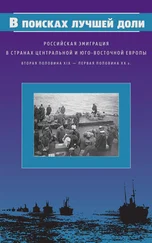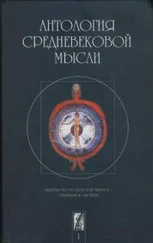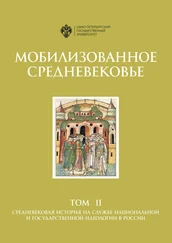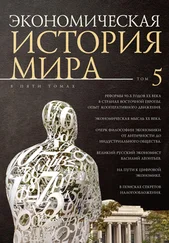Мобилизованное Средневековье. Том 1. Медиевализм и национальная идеология в Центрально-Восточной Европе и на Балканах
© Санкт-Петербургский государственный университет, 2021
© Коллектив авторов, 2021
Введение, или Для чего понадобилась мобилизация Средневековья?
Вызвать прошлое – значит сделать его нашим собственным.
Д. Лоуэнталь
«Темные века закончились», «Стыдящиеся монахи», «Овсянка для священника – столь хороша, что невозможно оторваться!», «Давайте назовем их русскими – князь Владимир основал новую нацию», «Специально от крестоносцев», «Франция играет грязно (1204 г.)», «Это война! Три года спустя (1340 г.)», «Новости испанской инквизиции». Таковы заголовки газеты «The Medieval Messenger», на которой стоит дата 13 октября 1349 г. [1] The Medieval Messenger. Friday, October, 13, 1349. No. 4627. London, 1996.
На самом деле она издана в Лондоне в 1996-м. Ее создатели хотели показать, как могла бы быть преподнесена древняя история современными газетчиками, как «новости Средневековья» звучали бы под пером журналистов ХХ в.
Феномен обращения к Средневековью для описания и истолкования современности получил название «медиевализм». Он проявляется в высокой и массовой культурах, литературном и художественном творчестве, политическом и национальном дискурсах, а также во всех сферах жизни, использующих символику, вплоть до коммерческой рекламы и компьютерных игр [2] Chaganti S. Under the Angle: Memory, History, and Dance in Nineteenth-Century Medievalism // Australian Literary Studies. 2011. Vol. 26, iss. 3/4. P. 147–162; The Medieval Hero on Screen: Representations from Beowulf to Buffy / ed. by M. Driver, S. Ray. Jefferson; London, 2004.
. Данное явление интеллектуальной деятельности, творчества, культуры хорошо изучено прежде всего на примере Великобритании [3] MacDougall H. Racial Myth in English History: Trojans, Teutons and Anglo-Saxons. Montreal, 1982; Simmons C. Reversing the Conquest: History and Myth in Nineteenth-Century British Literature. New Brunswick, 1990; The Recovery of Old English: Anglo-Saxon Studies in the Sixteenth and Seventeenth Centuries / ed. by T. Graham. Kalamazoo, 2000; Literary Appropriations of the Anglo-Saxons from the Thirteenth to the Twentieth Century / ed. by D. Scragg, C. Weinberg. Cambridge, 2000; Wawn A. The Vikings and the Victorians: Inventing the Old North in Nineteenth-Century Britain. Cambridge, 2000; Kevin J. Cinema Arthuriana: Twenty Essays. Jefferson; London, 2002; Кратасюк Е. Г. Присвоение Средневековья: легенды артуровского цикла в рекламе и кинематографе конца ХХ века // Средние века. 2002. Вып. 63. С. 145–153; Alexander M. Medievalism: The Middle Ages in Modern England. New Haven; London, 2007; Cruise C. “Sick-sad dreams”: Burne-Jones and Pre-Raphaelite Medievalism // The Yearbook of English Studies. 2010. Vol. 40, no. 1/2. P. 121–140; Kathleen C. Eco-Tourist, English Heritage, and Arthurian Legend: Walking with Thoreau // Arthuriana, 2013. Vol. 23, no. 1. P. 20–39; Brownlie S. Memory and Myths of the Norman Conquest. Cambridge, 2013; Elliott A. Medievalism, Politics and Mass Media Appropriating the Middle Ages in the Twenty-First Century. Suffolk, 2017.
, в несколько меньшей степени – Франции [4] Glencross M. Relic and Romance: Antiquarianism and Medievalism in French Literary Culture, 1780–1830 // The Modern Language Review. 2000. Vol. 95, no. 2. P. 337–349; Morowitz L. Medievalism, Classicism, and Nationalism: The Appropriation of the French Primitifs in Turn-of-the-Century France // Studies in the History of Art. 2005. Vol. 68: Symposium Papers XLV: Nationalism and French Visual Culture, 1870–1914. P. 224–241; Bloch R. Restoration from Notre-Dame de Paris to Gaston Paris // Manufacturing Middle Ages. Entangled History of Medievalism in Nineteenth-Century Europe / eds P. Geary, G. Klaniczay. Leiden; Boston, 2013. P. 279–298; Montoya A., Ferré V. Medievalism and Theory: Toward a Rhizomatic Medievalism // RELIEF. 2014. Vol. 8, no. 1. P. 1–19.
, Германии [5] Classen A. The Never-Ending Story of the (German) Middle Ages: Philology, Hermeneutics, Medievalism, and Mysticism // Rocky Mountain Review of Language and Literature. 2001. Vol. 55, no. 2. P. 67–79; Fuhrmann H. Überall ist Mittelalter: Von der Gegenwart einer Vergangenen Zeit. München, 2010; Werner M. Medievalism and Modernity: Architectural Appropriations of the Middle Ages in Germany (1890–1920) // Manufacturing Middle Ages. Entangled History of Medievalism in Nineteenth-Century Europe / eds P. Geary, G. Klaniczay. Leiden; Boston, 2013. P. 239–258; Eichenberger N., Kirakosian R., Wareham E. The German Middle Ages in the Sixteenth to Eighteenth Centuries: Reception and Transformation // Oxford German Studies. 2014. Vol. 43, no. 4. P. 335–344.
, Скандинавских стран [6] Wilson D. The Roots of Medievalism in North-West Europe: National Romanticism, Architecture, Literature // Manufacturing Middle Ages. Entangled History of Medievalism in Nineteenth-Century Europe / eds P. Geary, G. Klaniczay. Leiden; Boston, 2013. P. 111–138; Andrén A. Medieval and Neo-Medieval Buildings in Scandinavia // Ibid. P. 139–158.
, Италии [7] Falconieri T. “Medieval” Identities in Italy: National, Regional, Local // Manufacturing Middle Ages. Entangled History of Medievalism in Nineteenth-Century Europe / eds P. Geary, G. Klaniczay. Leiden; Boston, 2013. P. 319–346.
, США (страны, не имеющей своего Средневековья, но обретающей его именно через медиевализм) [8] Kegel P. Henry Adams and Mark Twain: Two Views of Medievalism // Mark Twain Journal. 1970–1971. Vol. 15, no. 3. P. 11–21; Galloway A. William Cullen Bryant’s American Antiquities: Medievalism, Miscegenation, and Race in “The Prairies” // American Literary History. 2010. Vol. 22, no. 4. P. 724–751; Scanlon L. Modernism’s Medieval Imperative: The Hard Lessons of Ezra Pound’s “Hugh Selwyn Mauberley” // Ibid. P. 838–862.
и других регионов [9] Goyal S. Rise of Medievalism in Indian History // Annals of the Bhandarkar Oriental Research Institute. 1997. Vol. 78, no. 1/4. P. 13–40; Marosi E. Restoration as an Expression of Art History in Nineteenth-Century Hungary // Manufacturing Middle Ages. Entangled History of Medievalism in Nineteenth-Century Europe / eds P. Geary, G. Klaniczay. Leiden; Boston, 2013. P. 159–188; Ersoy A. Ottoman Gothic: Evocations of the Medieval Past in Late Ottoman Architecture // Ibid. P. 217–238; Ryan E. A Medieval New World: Nation-Making in Early Canadian Literature, 1789–1870. Toronto, 2015.
.
Читать дальше











